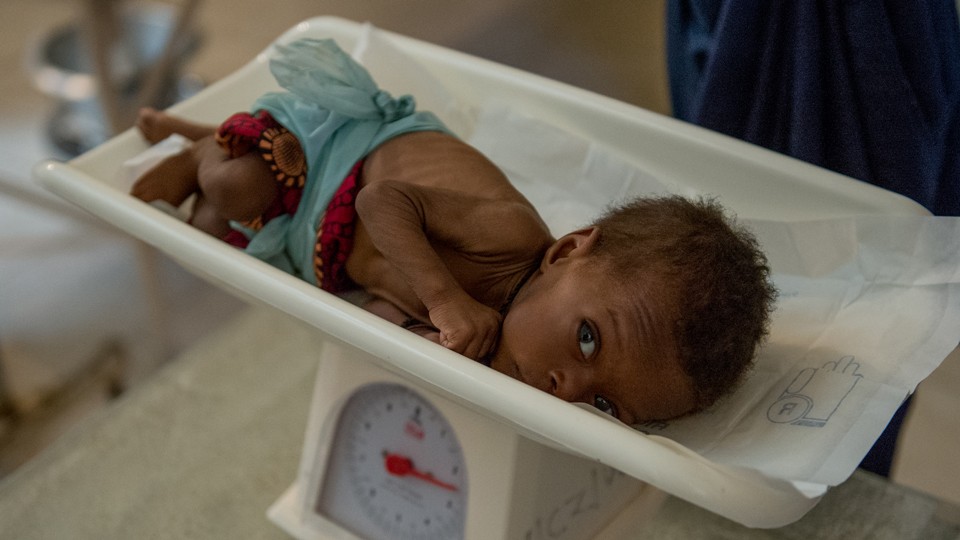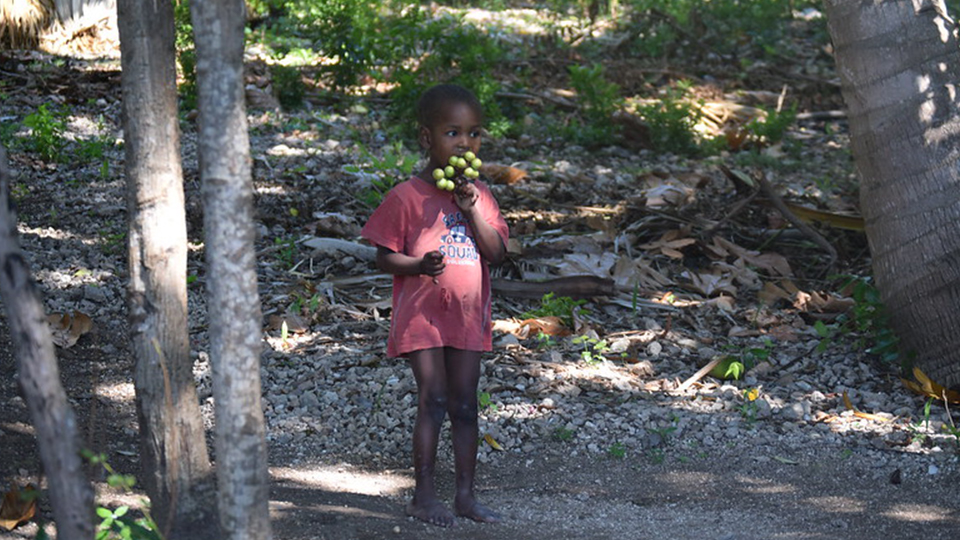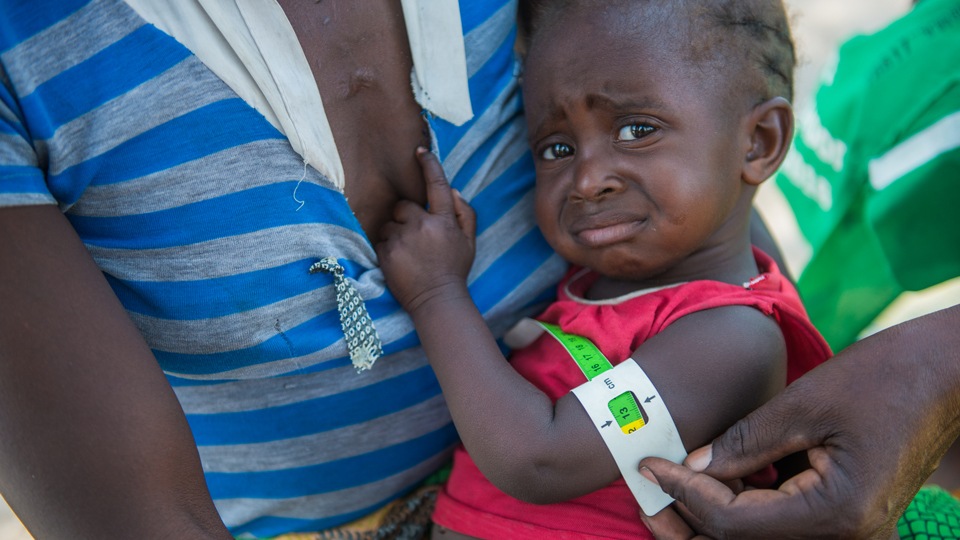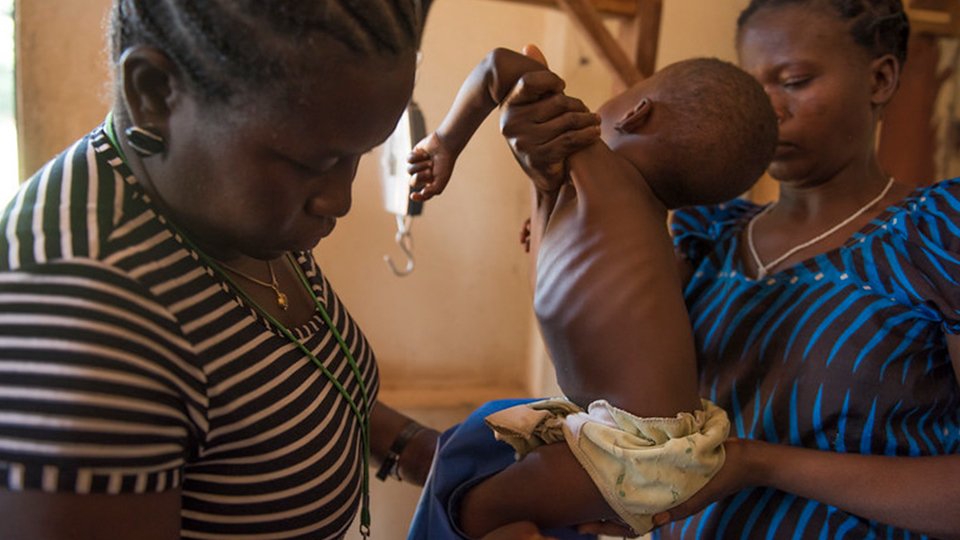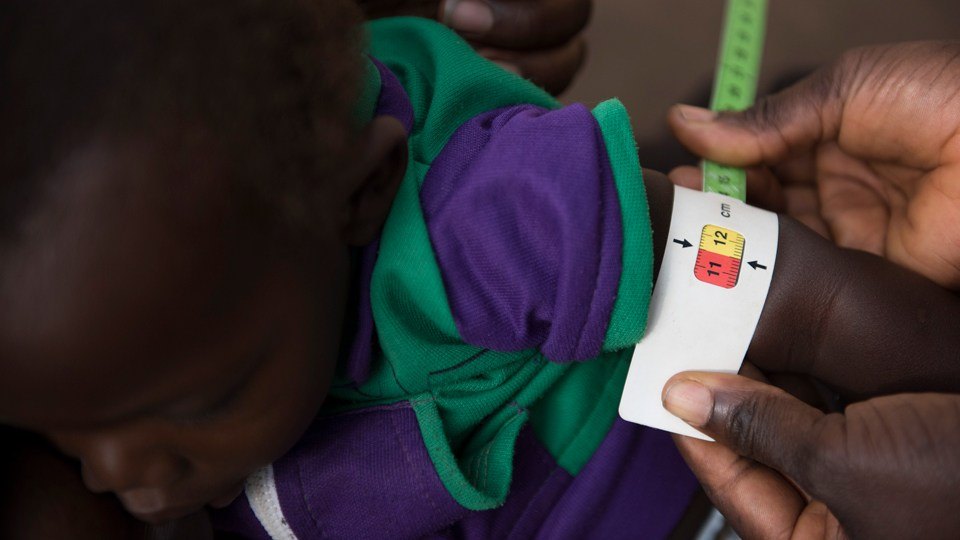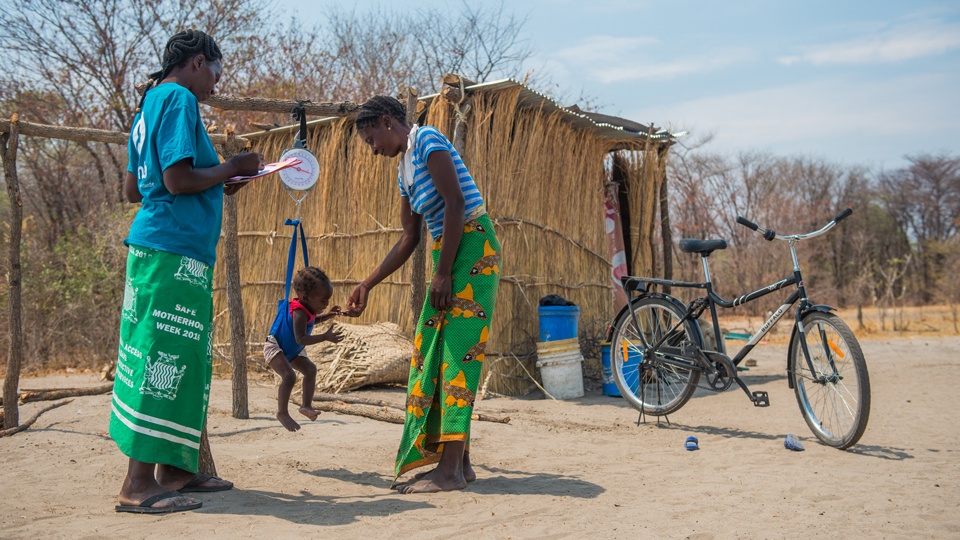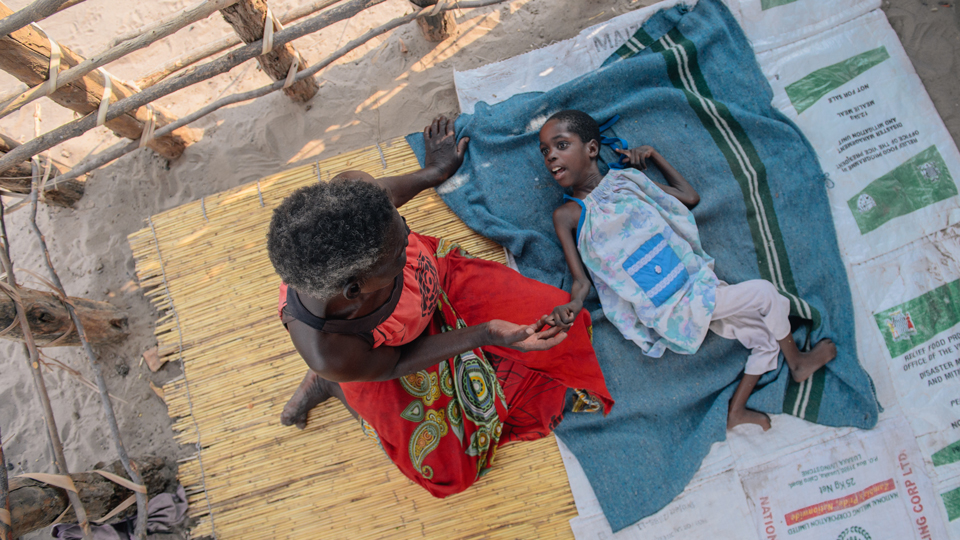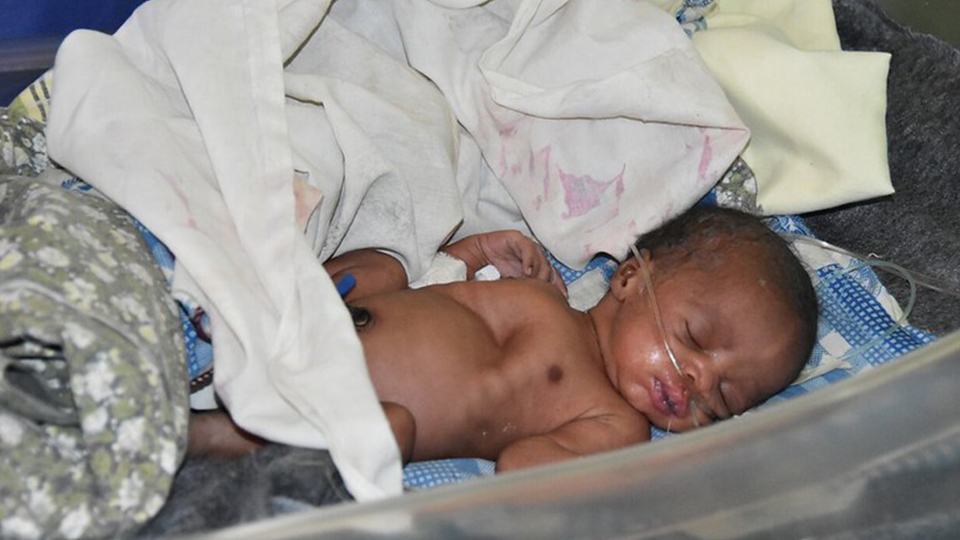10 Facts About Nutrition on World Food Day

COVID-19 has made us rethink our appreciation for the simple things in life. Especially things that some take for granted and many go without: Food.
World Food Day, established by the United Nations, is a day of global solidarity to tackle the malnutrition crisis, particularly within poor and vulnerable communities. This year, the theme is “Grow, Nourish, Sustain. Together.”
The global hunger crisis has deepened as a result of the pandemic, leading to acute hunger for an estimated 265 million people by the end of the year. CMMB is working closely with local partners on the ground to distribute emergency food supplies and improve access to nutrition. The lives of the most vulnerable are at risk. It is essential that we ensure that women, children, and families have enough food to survive during this pandemic.
We all have a role to play in raising awareness about the hunger crisis. Today, we start by learning the facts.
Baby Ing’utu suffering from severe malnutrition at Mwandi Mission Hospital, Zambia
Did you know that…
1. Today, over 820 million people suffer from hunger and the number is growing due to COVID-19.
One in every nine people in the world does not have enough food to eat. The COVID-19 pandemic could add between 83-132 million people to this number, depending on the length of global shutdowns and speed of economic recovery.
Can you imagine eating only cassava leaves every day because other food is too expensive? This is the life of many poor mothers and children in places like Rimenze, South Sudan. People in this region earn about $1 per day and can afford very little food for their children, who too often suffer from severe malnutrition.
A child with malnutrition suffered from swelling of the gut, Haiti
2. Developing countries account for 98% of the world’s undernourished people.
Our world is deeply unequal. More than 250 million of the world’s undernourished populations live in Africa where the numbers are growing faster than anywhere.
At the same time, 40 percent of food produced in the U.S. every year is thrown out. We might want to think twice about what wasting food means to those who are dying from malnutrition.
Mwangala weighed 6.3 kg in her 9th month (average should be 8kg), Mwandi
3. Hunger and Poverty Form a Vicious Cycle
$1.90 a day or even less. This is what 734 million people live on every day. COVID-19 could cause an additional 40 to 60 million more people fall into extreme poverty. Inadequate income indicates the inability to afford nutritious food, which will lead to malnourished health conditions that prevent people from being able to work, consequently trapping them below the poverty line.
A severely malnourished boy is being assessed when holding by his mother in, South Sudan
4. About 690 million people worldwide go to bed hungry each night
What does sleep mean to you? For 690 million people, sleeping is a way to temporarily escape hunger. They go to bed with hunger, pain, and the fear of another hungry day.
Emmanuel’s being measured for red zone malnutrition by a CMMB community health worker, Rimenze
5. 66 million primary school-age children attend classes hungry across the developing world
Hunger greatly hinders children’s ability to learn and grow. With a hungry and undernourished body, a child cannot learn as effectively.
Zungi and Kuku who are being treated for malnutrition at Mother of Mercy Hospital are writing, Sudan
6. Nearly 80% of stunted children – about 122 out of 155 million – live in countries affected by conflict
Wars and violence often mean food inaccessibility and hunger, while competition for food and scarce resources multiplies the threat of civil war. Children, the most vulnerable population, living in a country ravaged by conflict are more than two times as likely to be malnourished. In places like South Sudan, where conflict is a part of everyday life, CMMB partners with UNICEF and other organizations to provide nutritional support.
Mwangala being weighed by a CMMB community health worker, Mwandi
7. Low birth weight infants are at higher risk for metabolic disease
Malnourished mothers often give birth to low birth weight infants. These infants are born with a greater risk for metabolic disease and a series of medical complications. Hunger and diseases tend to accompany their lives if no action is taken.
8. Approximately 3.1 million children die from malnutrition each year
Hunger is the leading cause of child deaths, which is 45% of all deaths for that age group—hunger is killing our world’s future.
Mwali, undernourished and severely disabled, and her grandmother, Mwandi
9. Only 25% of severely malnourished children have access to life-saving treatment
Many lives could have been saved if there were adequate life-saving treatment. Access to medical treatment is a matter of life and death.
Kodjo, a 32 weeks old baby, being treated for malnourishment at the Mother of Mercy Hospital, South Sudan
10. It only costs $0.80 to feed one child for a day
$0.80 might not be enough to buy a soda in the United States, but it means a day of survival for a child suffering from acute hunger. A small share of your meal can save a child’s life.
Food supply chains have been cut off in efforts to limit the spread of COVID-19, leaving major shortages of food for families in need. Now more than ever, CMMB needs your support to continue our effort to fight the global hunger crisis.
